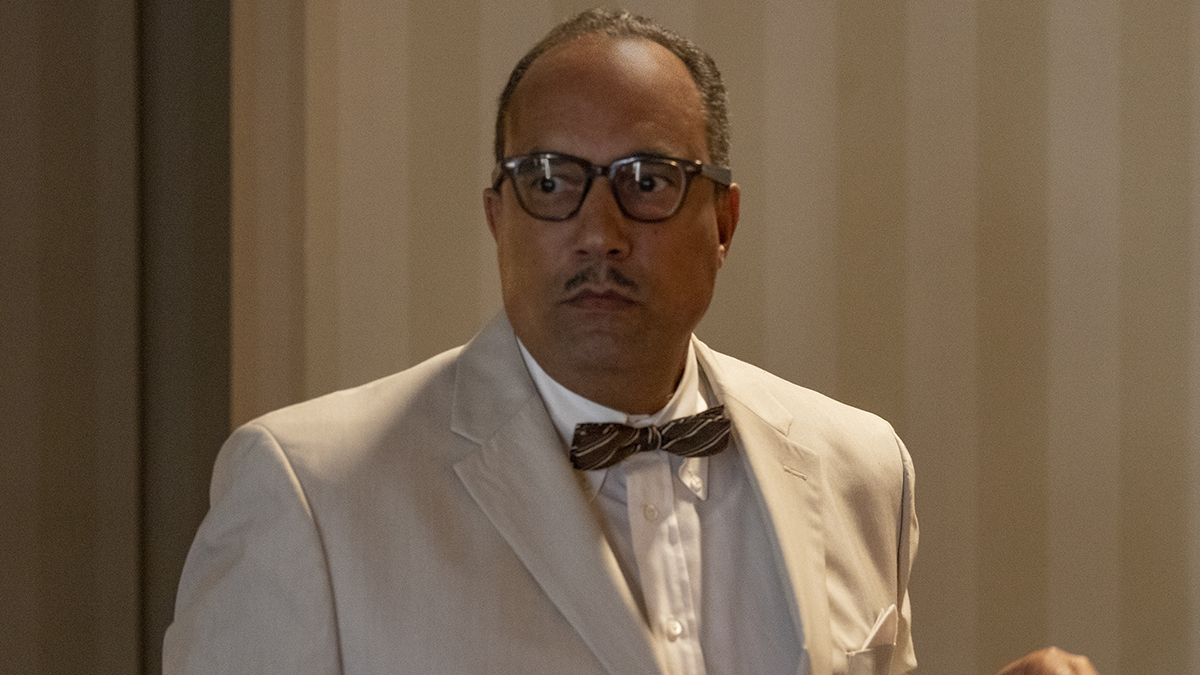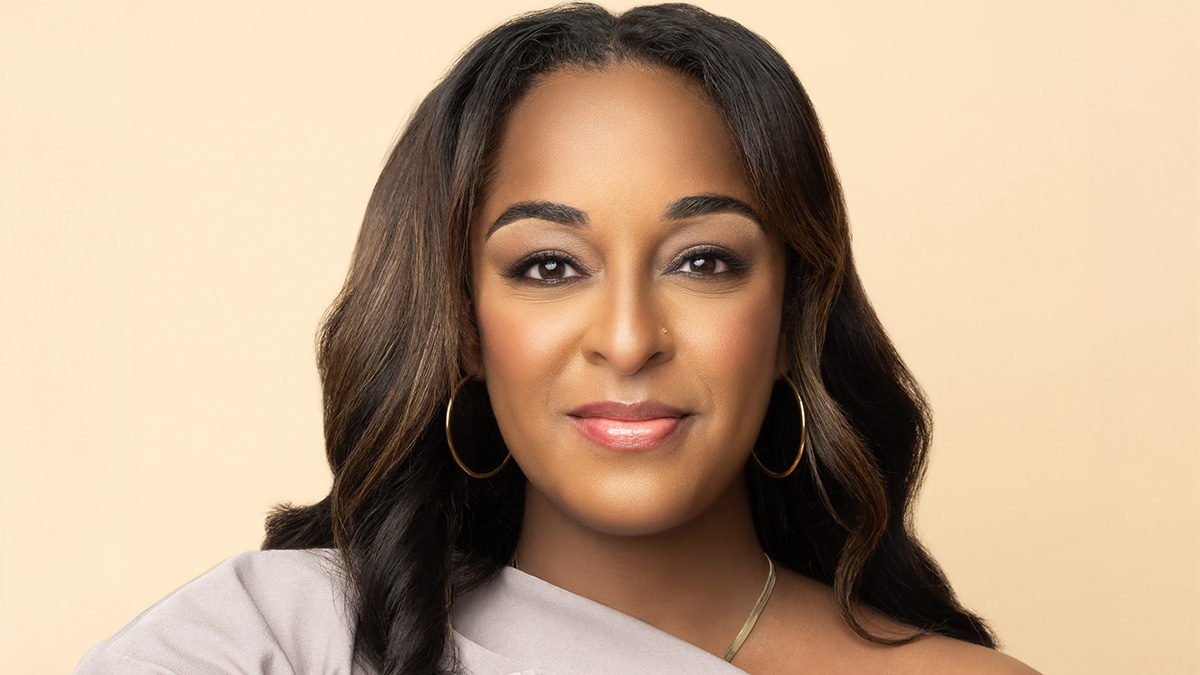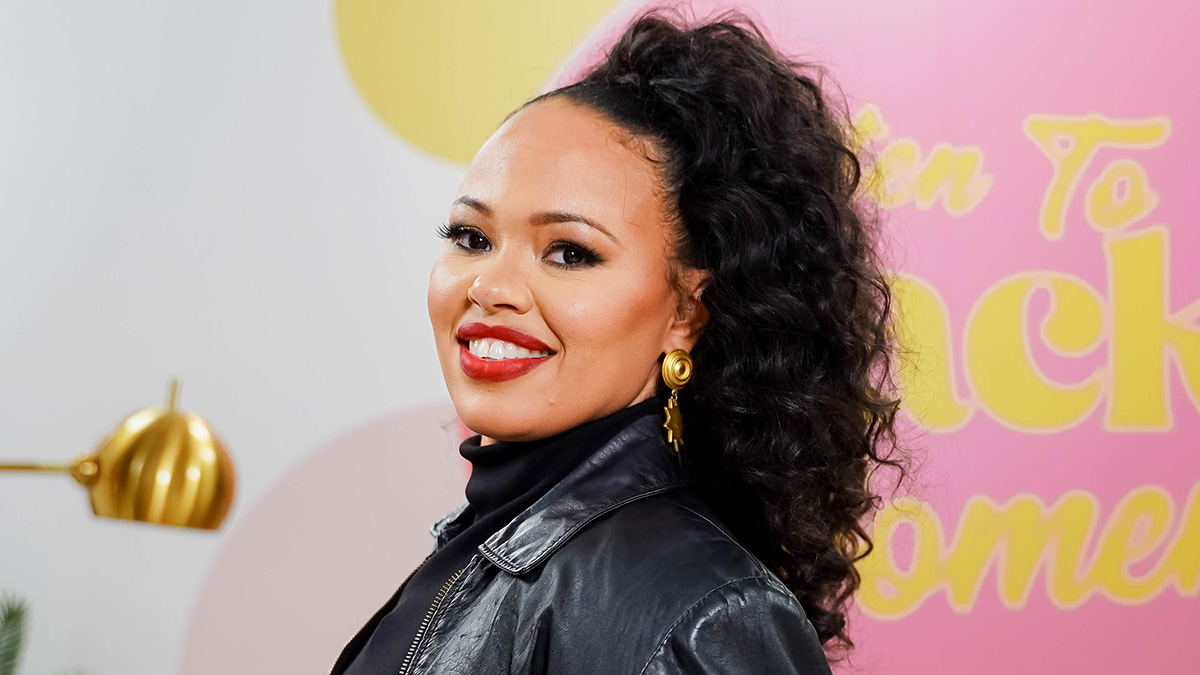On February 12, Spike Lee’s second feature, School Daze, celebrated its 35th anniversary. The genre-bending musical dramedy captured the social ills of the Black experience at a fictitious HBCU in 1988, spawning on-screen replicas and homages for years to come. From A Different World to today’s grown-ish, the Black college experience became a staple of culture into the new decade. The film was also the debut role for actor, writer, producer, and frequent Lee collaborator, Roger Guenveur Smith.
Smith has since appeared in eight of Lee’s films – the most of any actor – and continues to stretch his limits as a storyteller on screen and stage. I sat down with Smith to reminisce on his experience at Mission College, discuss his most recent role as unsung civil rights activist, Dr. TRM Howard, in last year’s Till, and the importance of Black stories being told by those living the narrative.
For those unfamiliar, School Daze was a satirical drama capturing Homecoming week in the lives of Black college students enrolled at the Historically Black College and University, Mission College. The tale centers on a young student and frat pledge Half Pint (played by Lee) who finds himself caught between two ideologies. One held by Laurence Fishburne’s activist Dap, and the other by the big man on campus, Giancarlo Esposito’s Julian, the leader of Gamma Phi Gamma fraternity. The film cascades through topics and genres for a once-in-a-lifetime film experience.
“It was an important film, and an underrated film,” Smith said. “It was an ambitious film that was supposed to work as drama, but certainly as comedy, certainly as satire, certainly as musical theater; it was supposed to work on all of those levels and I think it works quite well on those levels. When writers are given advice, typically a writer is given advice to write what they know. And obviously, Spike Lee had had an experience, and he was obviously taking notes when he was having those experiences. And that became the blueprint for this thing called School Daze.”

The film was loosely based on Lee’s own college days attending Atlanta’s Morehouse, the all-male institution that shares space with its female counterpart, Spelman College.
“I knew right away that we were onto something special,” Smith chimed. “We met in Atlanta and most of the talent was from the West Coast or from New York. I don’t think there was that kind of collection of Black talent in one room, ever.”
The cast boasted a litany of rising Black talent, which would reach mightier heights as a renaissance of Black art became prominent throughout the 1990s. In addition to then-Larry Fishburne and Esposito – now accomplished film and TV titans in their own right – the call sheet included the public’s first looks at singer and actress Tisha Campbell, future A Different World leads Kadeem Hardison and Jasmine Guy and the late great talents of vocalist Phyllis Hyman and actor Bill Nunn. Paired with the new faces were Black acting legends, such as Ossie Davis and Joe Seneca.
Smith found his way into the groundbreaking production by sheer determination. He was living in Minnesota, acting full time with the Gutherie Theatre company. On his day off, he visited the local cinema to view a black-and-white movie entitled She’s Gotta Have It. Smith sat through two showings.
“I said, ‘Who is this guy? Where is he and what is he doing next?’ So I was able to finagle a cattle call audition through the casting director Robi Reed and I was asked to prepare a joke and sing a song and do a scene from the screenplay. I did all of those things, and I guess I was considered demented enough to play a fraternity pledge, Gamma Phi Gamma, the character by the name of Yoda.”
Smith may have had an inkling they were creating something special on Morrris Brown’s campus in 1988, but he never fathomed the impact the niche film would have on generations to come. Especially those inspired to attend an actual HBCU.
‘Yeah, I want that experience too!’ “Well, do you, really?” Smith chuckled. He then rattled off the amount of trauma shown in the film’s narrative.

“Interracial social conflict, colorism, sexual assault, misogyny of the lowest form. Spike navigates it all in a tremendously ambitious piece. Which reflects, I think, the eclectic nature of Spike’s imagination. It’s a preview for a 30-year career to come. One that deals with performance pieces, biopics, documentaries, dramas, comedies, you name it. He’s achieved in all of those genres and then some.”
That “then some” has been a parade of now-classic films saturated with Lee’s distinct Black perspective. From the Denzel Washington-fronted epic, Malcolm X, to the exploration of interracial love in Jungle Fever, and his magnum opus Do the Right Thing, an unapologetic declaration of real-life racial tension that erupts in civil rage during a hot summer in Brooklyn. The 1989 film saw Smith in his second Spike role, the stuttering Smiley, who donned sketches of Black American heroes as his local borough was engulfed by flames of unrest.
“I’ve been the beneficiary of that three-decade-long struggle. I’d like to think that I’ve contributed as well to the struggle,” Smith said.
Today, Smith’s work continues to be exemplary in examining the life and times of Black Americans, both past and present. Last year, Smith appeared in Chinonye Chukwu’s soaring biopic, Till, which told the story of Mamie Till-Mobley’s fight for justice following the horrific murder of her 14-year-old son, Emmett. His death and the following trial against the murderers were the precipices for the Civil Rights Movement.
Smith portrays Dr. TRM Howard, a prolific physician and activist who was instrumental in Till-Mobely’s pursuit of justice in an unjust country.
“I was very honored to be asked to participate,” Smith said. “Especially after I started digging into Dr. TRM Howard and found out, he was such an interesting, radically inclined kind of man of all trades. Peeling back the layers of who this guy was, he was very distinctively dressed. He always had these crazy eyeglasses, and he had a very distinctive way of talking. Which I took in kind of inspiration for the way I was talking as Dr. Howard.”
Selected by Chukwu for the role, Smith’s research on Howard unveiled a very accomplished individual. A medical surgeon, Howard also served as a community organizer instrumental in the establishment of Mount Bayou, an all-Black town near Money, Mississippi. Here he helped build a Black oasis founding a hospital, a health clinic, a zoo, a park, and the very first swimming pool for Blacks in the state.
Smith described him as a bona fide bon vivant, with an affinity for big game hunting in Africa, and lavish annual New Year’s Eve parties. Howard was also a mentor to others in the movement, including a young Medgar Evers, Fannie Lou Hammer, and later, the Rev. Jesse Jackson.
Beyond the research, Smith said he approached Howard as he would any other role.
“I think as with any character, we want to know what makes them tick. And you know, a lot of people thought they knew who Huey P. Newton was; a lot of people think they knew who Christopher Columbus was, or Frederick Douglass or Rodney King. I’ve done an imaginative take on all of those historical characters. And with Howard, I had to find out exactly how he played into this particular story, which is called Till, it’s not called “Howard.”
”I had to learn how I could best be of service to this story and to this history. The things that I dug up, although they might not have been indicated in the final cut, still affected who I was and my relationship with the other people in the film.”
In addition to his own studying of Howard, Smith was emboldened in his work after meeting the late Medgar Evers’ widow, Marlee Evers, initially during production on a Zoom call and in person at the film’s premiere.
“[When] you’re getting that kind of love from an elder, you don’t want to let them down.”
Till, which starred the amazing Danielle Deadwyler, was critically acclaimed and received awards chatter for Deadwyler’s performance. Unfortunately, the praise stopped short of any major award recognition. The same befell Gina Prince-Bythewood’s action drama, The Woman King, which saw lead Viola Davis completely absent from the ballot. Thrifty-five years after School Daze and there still seems to be a visceral hesitation to support Black stories by Black auteurs.
Despite the success of a Black Panther or Selma, Hollywood’s promise of diversity and inclusion feels empty. Especially for projects that attempt to reach beyond the restraints the industry, and even the public, have placed on Black creatives.
In recent years, the conversation of which stories are told has grown louder than the push for African American art to be made in general. Black Twitter buzzes with campaigns against slave movies and anything that resembles “Black trauma.” It comes at a time when the powers that be are actively trying to erase Black stories, past, present, and future. Smith calls it out for what it is.
“First, they burn the books, and then they burn the people,” Smith said. “I don’t think that the demand for the stories or the rejection of the stories is as important as our need to tell the stories. There will always be a need for us to be self-defining. There will always be a need for us to tell the kind of truths and the kind of lies that we want to tell.”
Smith references a mentor, the late Ossie Davis, who appeared in several of Lee’s films, including School Daze, Do the Right Thing, Jungle Fever, and Get on the Bus.
“Ossie, throughout his work with Spike would play these amazing characters who were not necessarily heroic, were not necessarily villainous… For example, the mayor in Do the Right Thing; Jeremiah, the man who was on the bus in Get on the Bus; or, the man in Jungle Fever who murders his own son, he’s allegedly a man of the cloth. Ossie always came up with these remarkably nuanced, complex characters. And this is, I think, the great liberating ethos of our work. What we’ve tried to do over the last 30 years.”
Three decades after his screen debut, Smith continues this work across mediums. His next project is a one-man show as Otto Frank, the father of Anne Frank and the sole survivor of his immediate family following the Holocaust. Smith will be touring the piece around the country later this year.
Words by Lorin T. Williams












